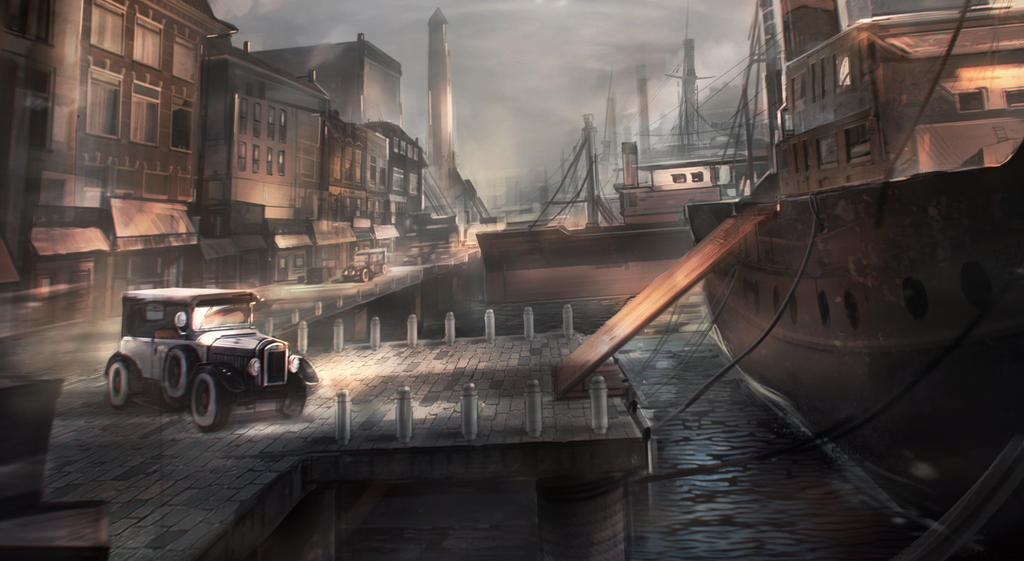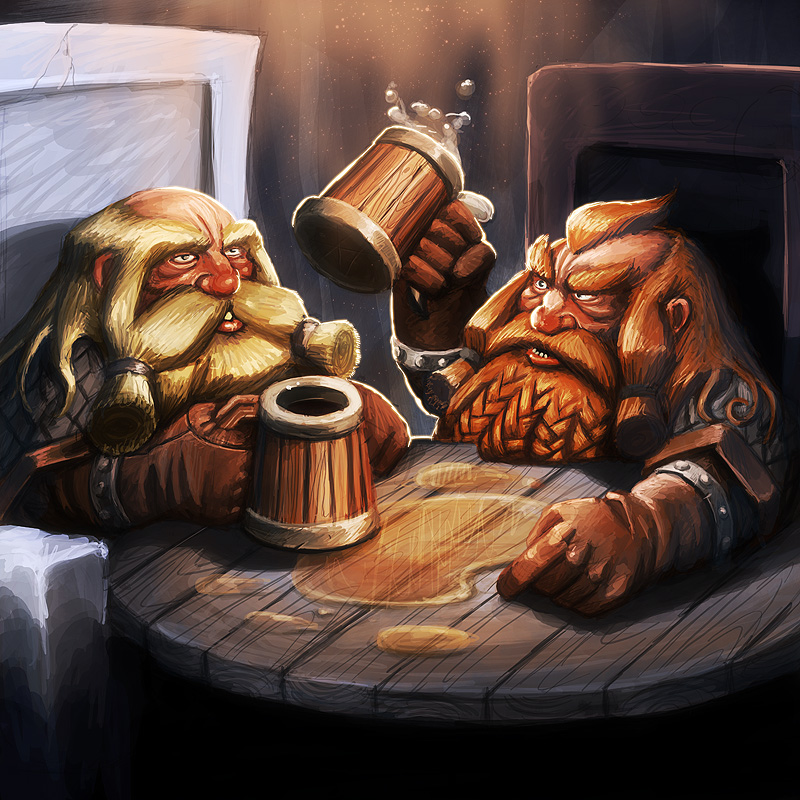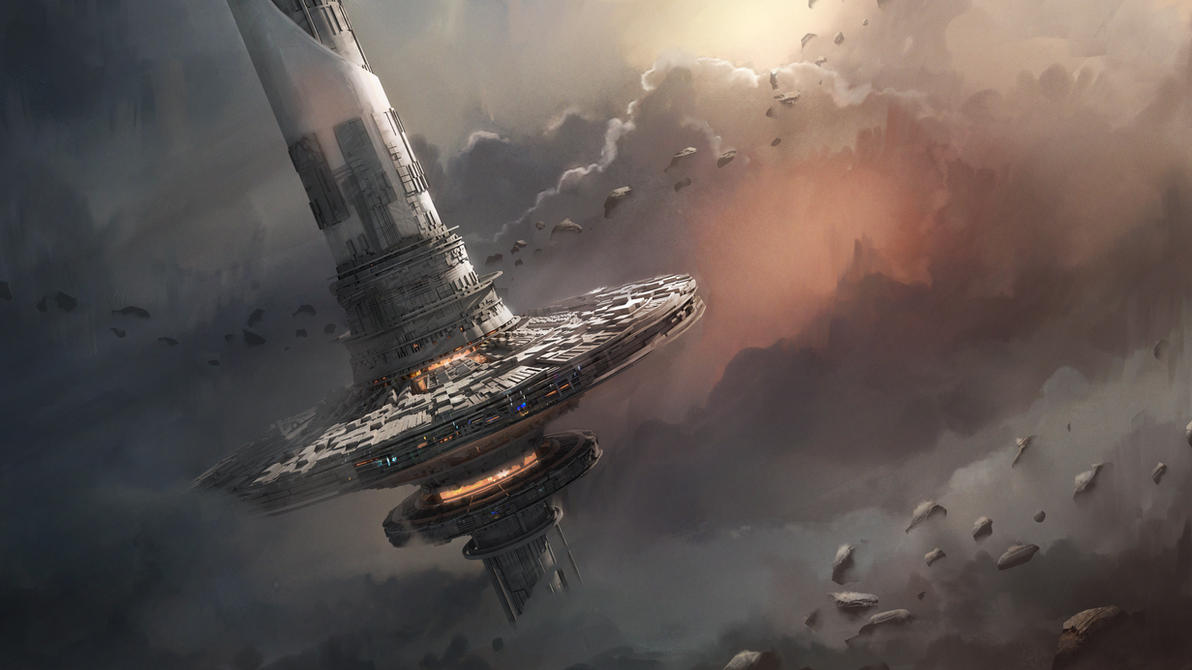Welcome to the roundtable ... once again the GM's gather and ponder the following:
How do you scale encounters for a smaller or larger group than you had planned on. Or than the published adventure planned on? What works, and what does not? Do different systems affect how you scale? And what about fish? They have scales.
+John Marvin
Scaling is easy, I just use a ruler or a tape measure ... except for the fish thing, then I use a
scaler...
I'll be honest, as good as this question is it's difficult for me to answer. I've only very rarely ever used published adventures, and for nearly my whole career as a gamer I have operated at the critical threshold of group size, e.g. one GM and two (rarely three) players. When you have so few players a single cancellation usually means rescheduling the evening's events. It's just the nature of the beast.
That said, I
have run some stuff out of published materials, and since most published adventures are scaled for 4-6 players in my experience that means that I can still throw my limited two cents in; let's call it 1.5 cents because of devalued currency exchange.
"Balancing" encounters seems to trip on the toes of our previous subject some, and to a point there is the strategy of "it'll just be harder" or "it'll be a little easier". There's nothing wrong with running your evening's session, planned for your X players, with X-1 players instead. Things will get a little harder, but unless you were already writing/planning for things to be difficult then there is probably not going to be a major power change. If its more like X/2 you may need to rethink the "fuck it" strategy above, but for normal sized groups (where "normal" is defined as four player characters) adding or losing one shouldn't kill things.
"That's all good and fine," you say, "but what if I was expecting six and I only four show up?"
Yes, yes, not everything is so easy, but really depending on your game system (mechanics) of choice this is still nothing to cry over.
Seriously, it's just a little milk ... err I mean it's just a couple of absent (or extra) players. So let's look at this in two ways: social encounters, and combat encounters...
For social encounters I think the only time that you will need to be concerned is if your group is currently missing its social heavies. Those characters who are best at negotiations, leadership, deceit, and the like will probably be missed, especially if the remaining party members are not skilled in these areas. Likewise the player(s) who are missing may be disappointed at their missed opportunity to shine. In cases such as this, and assuming you are not willing or able to stall for a session, you can either make the social encounter's easier for the remaining players, play the encounter without rules (or perhaps just rules light), or possibly introduce an NPC who can help the players out, but will extract a cost at a later time via a favor or some other connection.
None of those are perfect options, and none of those help the player who is missing the session feel better about missing a good chance for the spotlight, but they all work. Another option, if your setting is flexible is to have what was planned to be a social encounter become a physical one. Perhaps the dwarves in question respond well to feats of strength and endurance. Allow the PCs the chance to show off their ability to toss rocks and drink wood alcohol as a means of lowering the eventual social roll difficulty. In this way the non-social PCs earn their advancement, and the social PC will feel a little less left out.
Adding players to a social encounter is both easier and trickier. Easier in that you will not need to work around a hole in the group's make-up, but more difficult in that you may have a hard time including the new players seamlessly. Obviously the former isn't any kind of issue that needs to be dealt with, but the latter bears some thought. Primarily you will want to look at the way you set up social encounters. If you design them to have aspects to fit each of your players then you will need to beg off five or ten minutes and quickly build a couple of ideas to work for the new folks. If you don't usually tailor your scenes to that degree you might be ok. Just make a point of including those new players as you would your current players and you can probably get by.
Combat, as always, provides a different set of challenges. When you add more players a standard combat scene will become easier, possibly to the point of being too easy, while something meant to be difficult will move toward the center and feel more like a standard encounter. Neither of these is inherently a bad thing, but they probably aren't what you want (since if you took the time to plan things out ahead you probably balanced them according to your desire and intent). Luckily, no matter what system you are using, making enemies harder to defeat is actually pretty easy.
Let's say your party is 50% larger than you had planned. An easy solution regardless of the system you are playing in would be to add 50% more enemies. If there were to be ten skeletons in the tomb, make it fifteen. The attack power of the individual heroes isn't any different so the extra skeletons and the extra heroes basically cancel each other out. Problem solved easy peasy.
Unless of course you have reason to limit the number of enemy creatures... like maybe your combat encounter was a lone dragon. Yeah, adding 50% of a dragon is going to A) make a mess, and B) not really balance things. Now there are two ways to fix this kind of situation. You can add the equivalent of half of a dragon. Perhaps this dragon has a child/spawn with roughly half the capability. Seems reasonable, and could totally work.
Or not.
If you cannot add additional creatures in the form of weaker versions, subordinates, minions, etc. then you can always add more hit points. The trick here is that you can't just add 50% more hit points because while that will make the creature 50% harder to take down it only raises the threat level by maybe 25% since it is not putting out more damage as well. You'll need to tweak that so that whatever the creature is it has more area of effect attacks, does a little more damage (adding maybe 20-30% more damage will probably work), or allowing it more attacks per round of combat. In this way the damage output will scale up, and when combined with the extra hit points your combat difficulty should work out OK.
Or you can cheat.
Some systems are built for this: the Cypher System has GM Intrusions, Mutants and Masterminds has complications, FATE has Compels. These are ways for the GM to "legally" alter the circumstances of the encounter mid stream. They work pretty well because they reward players with XP, Hero Points, FATE points, etc. This keeps the game "economy" working, and in general is how things are "meant to be played." Using these methods a little more aggressively to make an encounter more difficult is perfectly reasonable and should be encouraged.
Other systems don't have these kinds of methods. They use something else: a GM Screen. What your players don't know won't hurt them, so long as they are being entertained. Lying about your dice to ensure that the combat encounter is
just difficult enough is, at least in my opinion, OK. Your milage may vary however, and some people refuse to consider this OK. If that applies to you I'd stick with the advice above then; add creatures, hit points, damage, etc to help scale up the encounter.
Those are my thoughts, but I welcome your opinions. I certainly don't think of myself as an expert in these kinds of situations. Rarely have I ever been in a position to suddenly have extra players, or to unexpectedly have fewer and still have enough to run a session with though, so don't take my word as creed, instead maybe check out some of the other GM's blogs listed below and see what they say.
~~~~~~~~~~~~~~~~
Got a question or subject for the GM's? Ask in the comments or send it an email to
gamemastersjourney@gmail.com and we'll put it into the hat for future round tables!
~~~~~~~~~~~~~~~~
Game Masters’ Roundtable of Doom
The Game Masters’ Roundtable of Doom is a meeting of the minds of tabletop RPG bloggers and GMs. Every GM has his or her favorite system, but in these articles we endeavor to transcend a particular system or game and discuss topics that are relevant to GMs and players of all roleplaying games.
If you are a blogger, and you'd like to participate in the Game Master’s Roundtable of Doom, send an email to Lex Starwalker at
gamemastersjourney@gmail.com and supply the URL of your blog.
Want to see some other blogger's takes on this subject? Check out the following (I'll add post specific links as they roll out):
+Scott Robinson -
The Perils of Scaling at
http://strangeenc.blogspot.com/
+John Marvin -
Scaling Encounters for Small and Large Groups at
http://dreadunicorngames.com/
+Burn Everything Gaming -
Scaling Adventures at
http://burneverythinggaming.com/
+Tom Harrison -
Just Add Water at
https://braceofpistols.wordpress.com/
+James August Walls at
http://ilive4crits.blogspot.com/
+John Clayton at
http://blog.filesandrecords.com/
+Lex Starwalker at
http://www.starwalkerstudios.com/blog/
+Peter Smits at
http://planeataryexpress.blogspot.com/
+Arnold K. at
http://goblinpunch.blogspot.com/
+Evan Franke at
http://asageamonghisbooks.blogspot.com/










